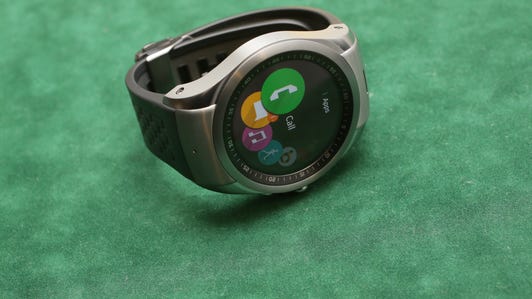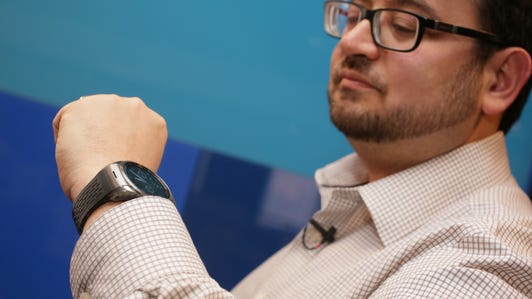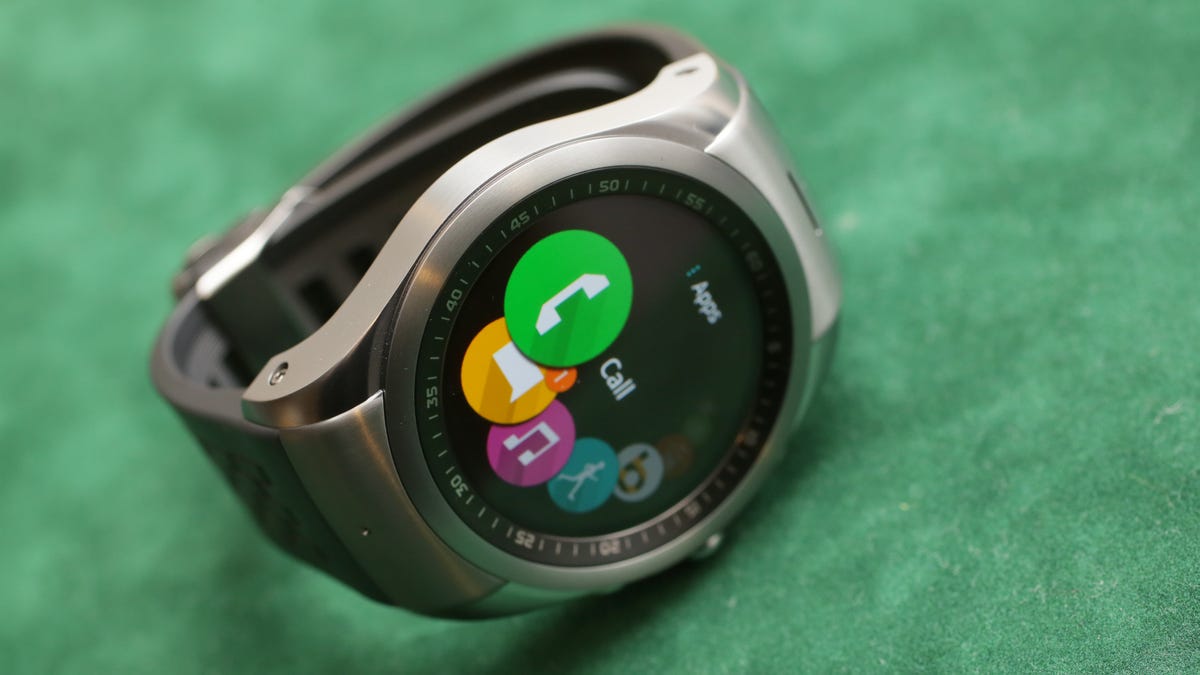BARCELONA — “Our mainstream for wearable devices is based on Android Wear.”
The statement was repeated over and over by multiple executives at a Sunday press conference here, the highlight of which was the LG Watch Urbane LTE, a smartwatch that runs on an operating system that is definitely not Android Wear.
The Urbane LTE instead runs on the LG Wearable Platform, which is based on the WebOS software that powered Palm’s Pre smartphone and now LG’s smart televisions.
It marks the unusual return of WebOS to a mobile device, and gives LG a chance to stand out from a crowded field of competition with its own software. But comments from LG executives suggest that even they aren’t sure where the platform is headed.
“We can’t confirm,” Chris Yie, vice president of marketing for LG’s mobile group, said on the sidelines of the event when asked about follow-up devices. “Part of this is an experiment.”
It’s clear why LG is treading carefully. The company doesn’t want to alienate its partner Google, which it still depends on for the Android operating system that powers its smartphones. While LG wants the flexibility to do its own thing, the company also doesn’t want to overtly compete against Google.
Alongside the Urbane LTE, the company also showed off the LG Watch Urbane, a similarly stylish smartwatch that runs on Android Wear.
A Google spokesman wasn’t immediately available for comment.
But it’s the Urbane LTE and its WebOS roots that dominated the conversation on Sunday. LG Wearable Platform is just the latest chapter in the colorful history of WebOS, which began life as the supposed savior of Palm, one of the original smartphone makers that succumbed to the pressures of the faster growing platforms from Apple and Google. Hewlett-Packard acquired Palm and WebOS with ambitious plans to bring the operating system to multiple products, but its plans fizzled and it shunted the operating system into the open source world.
LG Watch Urbane LTE






+27 more
LG brought new life to WebOS by acquiring it from HP for use in its televisions, and has now brought it to the wearables market. While LG’s television division still refers to it as WebOS, the mobile division says it has added enough on top of the software that it required its own name.
As for whether it stays with LG in the long term? The company’s executives appear to be waiting to see what the consumer reaction will be.
“My big question around LG’s WebOS is ‘why’: what does WebOS, or the watch itself, do that solves a problem consumers need solved or didn’t know they had?” said Avi Greengart, who covers consumer tech for Current Analysis. “If LG can answer that, there’s no reason it can’t succeed.”
While its main focus has been on Android Wear, Sungjin Lee, senior manager in charge of the Urbane LTE project, said LG adopted its own Wearable Platform so it can deploy near-field communication for mobile payments and LTE — two technologies that Android Wear doesn’t currently support.
One thing LG knows for sure: the WebOS platform isn’t heading to smartphones anytime soon. “We’re content with Android,” said LG spokesman Ken Hong.
A Samsung-like flood of smartwatches
The Urbane LTE and Urbane mark the third and fourth smartwatch to come out over the last several months, with LG taking a Samsung-like strategy of rolling out new devices at a staggering rate.
LG wants to avoid the mistakes of the past, when poor decisions about the adoption of Android forced them to play catch-up to other competitors such as Samsung and Motorola.
“We don’t want to be late on another trend,” Yie said. He added that the extra products keeps its momentum going with other heavy hitters like Apple entering the market with its own smartwatch. Apple is expected to talk more about the Apple Watch at an event on March 9.


Now playing:
Watch this:
The LG Watch Urbane LTE is a big, attractive, feature-stuffed…
2:16
LG’s philosophy for smartwatches is different than for smartphones. LG has limited its smartphone lineup to a handful of premium and mid-tier devices, due to limited consumer buying patterns. But smartwatches are different, Hong said, because they’re also considered accessories. So while you may buy one smartphone every two years when your contract expires, you may end up buying more than smartwatch in the same time because of differing tastes and interests.
“Accessories are different,” Hong said. “There’s not just one product that fits everyone.”
The G Watch R, for instance, was more sporty, while the Urbane LTE is more upscale. Hong said he can imagine consumers potentially collecting them down the line.
“We’re still feeling out the wearable market,” Hong said. “No one knows how the wearables market will shape out.”
For now, it’s been muted. Six products running Android Wear accounted for 720,000 units, or just 15.6 percent of a total of 4.6 million wearable products shipping last year, according to research firm Canalys.
The app issue
While Android Wear already has developer support, LG will have to build out its own ecosystem for its Wearable Platform. It doesn’t appear to be in rush to do so.
Urbane LTE project manager Lee said he would have to check on the dates for when its application development environment would launch.
Hong said the smartwatch screen is less about apps, and more about notifications. “If Android Wear is any indication, there is limited demand for apps,” he said.
But if there is a need for apps, LG can work to reach out to developers. Given the WebOS roots, it is relatively easy to build programs for the platform. LG has also worked to bulk up its software development staff internally, Hong said.
To start, there will be a Watch app available to all Android smartphones on the Google Play store to help with notifications and pairing. But with its own standalone LTE radio, the Urbane LTE will be able to make and receive its own phone calls and text messages.
iPhone compatibility?
Unfortunately, the Urbane LTE won’t be able to work with the iPhone off the bat. The company is considering supporting iOS, but it is also looking at how the market will react to the product, Lee said.
There are also technical difficulties with iOS because Apple’s operating system is more locked down than Android, with companies only able to access certain parts of the software.
Not that it’s clear that an iPhone user would be interested in the Urbane LTE. After all, Apple fans have their own watch to look forward to next Monday.


The Urbane LTE could end up being a one-off depending on market reaction.
Sarah Tew/CNET



